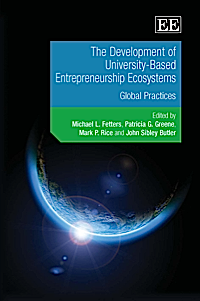 One of my favorite movie lines, which I think about often, comes from the 1993 movie Rudy. In his pre-game inspirational talk in the film, Notre Dame football coach Dan Devine says, "No one, and I mean no one, comes into our house and pushes us around."
One of my favorite movie lines, which I think about often, comes from the 1993 movie Rudy. In his pre-game inspirational talk in the film, Notre Dame football coach Dan Devine says, "No one, and I mean no one, comes into our house and pushes us around."
Yet, this happens all the time in our businesses.
We let competitors push us around. We let them steal our customers. We let them push our prices and margins down. And we let them dictate how we run our businesses.
So how do we stop this? How do we dictate how competitors need to act? And to go even further, how can we terrorize our competition so they don't even want to compete with us?
Here are 7 of my favorite ways:
1. Know More Than Them
By investing in the latest education, you will always have an edge on your competitors (assuming they don't also do this). Learning the best new techniques in sales, marketing, operations, finance, HR, etc. will allow you to outperform your competition on multiple fronts.
2. Create a Vision and Stick to It
Spend the time to create a solid vision of the company you want to create. For example, my vision at Growthink is to become the number one place where entrepreneurs go for assistance starting and growing their companies.
When you have a solid vision, you will not make knee-jerk reactions to your competitors' actions. Rather they will react to you. Also, while competitors' actions may cause you to shift your strategies, if you have a set vision, you will spend less time strategizing and more time Dave Lavinskyexecuting.
innovation DAILY
Here we highlight selected innovation related articles from around the world on a daily basis. These articles related to innovation and funding for innovative companies, and best practices for innovation based economic development.
London 360

Here’s an amazing way to get the lay of the land in London. Photographer Jeffrey Martin has stitched together 7,886 high-res images, creating an 80 gigapixel (or 80 billion pixel) panoramic photograph of England’s great capital. The photo is also interactive, which means you can play aerial tourist. When you enter the site, click on “Show Landmarks” (lower left corner), make a selection, and then start flying around the city.
Build Your Own Silicon Valley? | Vivek Wadwha
 Vivek Wadhwa, a leading entrepreneurship researcher at Duke University, offers a piece explaining why so many well intentioned attempts to copy Silicon Valley fail. He focuses on connections between and among motivated people. In other words the culture and social institutions of the place. From Wadhwa’s piece in the Chronicle of Higher Education:
Vivek Wadhwa, a leading entrepreneurship researcher at Duke University, offers a piece explaining why so many well intentioned attempts to copy Silicon Valley fail. He focuses on connections between and among motivated people. In other words the culture and social institutions of the place. From Wadhwa’s piece in the Chronicle of Higher Education:
All of those are well-intentioned efforts to build Silicon Valley-style technology hubs, but they are based on the same flawed assumptions: that government planners can pick industries they want to develop and, by erecting buildings and providing money to entrepreneurs and university researchers, make innovation happen.
12 Places You Didn’t Know Had Free WiFi
 Sure, we all know many airports and cafes have free WiFi, but what about your local big box retailer?
Sure, we all know many airports and cafes have free WiFi, but what about your local big box retailer?
Recently Unplggd.com were surprised to discover a free WiFi hotspot where they did not expect it which got them thinking about all of the unexpected places where they’ve found free WiFi.
1. The Laundromat
2. Best Buy
3. Fast Food Shops
4. The Park
5. Grocery Store
Can Japan profit from its national 'cool'?
 (CNN) -- Japan's finances may not be in great shape, but when it comes to fashion, there still aren't many places more cool.
(CNN) -- Japan's finances may not be in great shape, but when it comes to fashion, there still aren't many places more cool.
Consumers from Asia, Europe and the United States might not be buying as many Japanese cars and TVs, but they continue to be influenced by Japan's culture. That means that when global brands are looking for the hottest new fashions, eyes almost inevitably turn eastward.
"Most of the time, most global trends start in Tokyo," trendspotter Loic Bizel told CNN. A Tokyo-based fashion expert who consults for labels like Timberland, Lacoste and Sonia Rykiel, Bizel also takes foreign fashionistas on tours of Tokyo to scout for street style trends to replicate in their home markets.
"People really started to look at Japan as a lab about seven or eight years ago," he added. "Trends are picked up really quickly in the streets."
As Technology Deals Boom, the Talk Turns to Bubbles
 Is the world ready for another Internet bubble?
Is the world ready for another Internet bubble?
Ready or not, it appears to be coming. In fact, it may already be here. And it seems to look, not surprisingly, like the last Internet bubble. (Well, maybe with fewer sock puppets.)
First, there’s plenty of deal flow. Dealogic data shows that the number of technology deals — more than 5,100 so far this year — is at its highest point since the year 2000. Back then, in the peak year for Internet deal-making, there were 7,007 technology mergers and acquisitions.
True to the scrappy start-up nature of tech investing, the deals are small. According to Dealogic, the average technology deal this year is $46 million, not much more than the average of $40 million in 2000.
DOE: $19 million for smart grid projects

On Wednesday, the U.S. Department of Energy (DOE) announced that five smart grid projects would receive more than $19 million in funding. The projects selected for these awards will help prepare the nation’s grid infrastructure to better handle clean energy technology.
Preparing Your Business to Go Global
A few weeks ago I pointed out how to ready your website for international business — everything from translating your website text, to search engine optimization in other languages. That article sparked thoughtful discussion. So this week I thought I’d expand the discussion beyond your Web presence, and focus on how to prepare your business as a whole to go global.

Leaders Can Start But ‘Go-To’ People Get It Done
 Go-to people get things done. As an entrepreneur, you need these people, and you need to be one, if you expect your startup to be successful. That may be easier said than done, since resumes do not tell the story, and without real nurturing, they won’t stay around long.
Go-to people get things done. As an entrepreneur, you need these people, and you need to be one, if you expect your startup to be successful. That may be easier said than done, since resumes do not tell the story, and without real nurturing, they won’t stay around long.
To highlight how rare this breed is, a new CEO of a large company once said, "I have more than 1000 people in my head office organization, 900 can tell me something’s gone wrong, 90 can tell me what’s gone wrong, nine can tell me why it went wrong, and one can actually fix it!" Finding and nurturing that one is the challenge for every company.
TechStars’ founder predicts accelerator implosion
 Less than two months from launching its New York program, TechStars co-founder David Cohen is already anticipating a critical mass being achieved in the startup-mentoring space within the next five years.
Less than two months from launching its New York program, TechStars co-founder David Cohen is already anticipating a critical mass being achieved in the startup-mentoring space within the next five years.
Cohen said that when he and two friends first launched TechStars in Boulder, Colorado four years ago there were just a handful of these accelerator programs. Now he said there are upwards of 60 across the country and he expects that to triple before the bubble bursts.
“There will be a run up to a couple hundred and then we’ll probably see a run down to 10 would be my guess over the next five years,” said Cohen, who has expanded TechStars to Boston and Seattle in recent years and has invested in more than 70 startups since launching the program. “There will certainly be a little mini accelerator bubble.”
Cambridge US-style seed capital and mentoring to tyros
 Cambridge is to host the private sector launch of a new investment and business accelerator programme for early stage businesses for which applications have now opened.
Cambridge is to host the private sector launch of a new investment and business accelerator programme for early stage businesses for which applications have now opened.
Backed by an angel investor syndicate, ideaSpace, and the National Endowment for Science, Technology and the Arts (NESTA), Springboard is a 13 week mentoring programme which combines support and networking opportunities, as well as up to £15,000 of investment capital.
Leading Venture Capitalists, Angel investors and entrepreneurs – including Alex van Someren from Amadeus Capital Partners, Colin Willis, managing director at Hotspur Capital Partners and Neil McClements, managing partner at Fintech Ventures Fund – have been enlisted as mentors on the programme.
New Book: The Development of University-Based Entrepreneurship Ecosystems
 Entrepreneurship and innovation are increasingly viewed as key contributors to global economic and social development. University-based entrepreneurship ecosystems (U-BEEs) provide a supportive context in which entrepreneurship and innovation can thrive. In that vein, this book provides critical insight based on cutting-edge analyses of how to frame, design, launch, and sustain efforts in the area of entrepreneurship.
Entrepreneurship and innovation are increasingly viewed as key contributors to global economic and social development. University-based entrepreneurship ecosystems (U-BEEs) provide a supportive context in which entrepreneurship and innovation can thrive. In that vein, this book provides critical insight based on cutting-edge analyses of how to frame, design, launch, and sustain efforts in the area of entrepreneurship.
Seven success factors were derived from an in-depth analysis of six leading, and very different, university-based entrepreneurship ecosystems in North America, Latin America, Europe, and Asia. These seven success factors are: (1) senior leadership vision, engagement and sponsorship; (2) strong programmatic and faculty leadership; (3) sustained commitment over a long period of time; (4) commitment of substantial financial resources; (5) commitment to continuing innovation in curriculum and programs; (6) an appropriate organizational infrastructure; and (7) commitment to building the extended enterprise and achieving critical mass. Based on these success factors, the authors provide a series of recommendations for the development of a comprehensive university-based entrepreneurship ecosystem.
This major assessment of how best to drive university-based entrepreneurship ecosystems is essential reading for anyone involved in higher education (particularly provosts, deans, and professors), government agencies concerned with socio-economic development, and all those concerned with helping entrepreneurship ecosystems to flourish.
Download the PDF
One of the authors from Babson, is Patti Greene and is a good friend of mine. She has great entrepreneurial and venture capital experience and contributes hands-on experience to the book................Rich Bendis
Where Does Innovation Come From?
Our lives are defined by innovation, and since you’re reading this on a computer, connected to the internet, you know what I mean.
GE was founded on new ideas and continues to drive innovation to solve the world’s toughest problems. As part of that, we are proud to announce the winners of the GE ecomagination Challenge, an exciting new way of finding and funding the most promising technological breakthroughs for our power grid. Please take a moment to look at the winning ideas and explore the site to learn more about how GE and these winners are collaborating to accelerate development of power grid technology.
We have been excited to host this hunt for innovation. But where does innovation come from? How does it happen? A lone inventor and a lightning strike of insight? More often, ideas take time and many hands. The seed of an idea is planted, nurtured, tended and eventually bears fruit. Teams of scientists, researchers and others sharing their results move an idea steadily forward until it reaches maturity.
The dangers that come with being on top
While every start-up dreams of ruling its industry, there are unique challenges that come with achieving that goal. The biggest challenge for Amazon has been to not appear arrogant, says Diego Piacentini, the company’s senior VP of international retail in this Entrepreneur Thought Leader Lecture given at Stanford University.
World Changing Ideas 2010
 Technology is all around us, expanding the limits of what is possible. but every once in a while, some invention or insight has an outsize effect; it creates a large discontinuity, dividing history into “before” and “after.” The steam engine, the transistor, the World Wide Web—each of these ideas seemed to emerge from nowhere to change our world in fundamental ways. Which key technology will arise fromtoday’s vast cauldron of innovation to become tomorrow’s world changing idea? It’s impossible to know, of course, but we know it will come.
Technology is all around us, expanding the limits of what is possible. but every once in a while, some invention or insight has an outsize effect; it creates a large discontinuity, dividing history into “before” and “after.” The steam engine, the transistor, the World Wide Web—each of these ideas seemed to emerge from nowhere to change our world in fundamental ways. Which key technology will arise fromtoday’s vast cauldron of innovation to become tomorrow’s world changing idea? It’s impossible to know, of course, but we know it will come.
What's the best place in the world to start a business?
 The Wall Street Journal ran an article yesterday about the best places to start a business. The results indicate that more and more countries are reducing the barriers to starting a business.
The Wall Street Journal ran an article yesterday about the best places to start a business. The results indicate that more and more countries are reducing the barriers to starting a business.
Here are some of the key figures:
- The USA ranks 3rd as the best place to start a business, after Denmark and Canada.
- It takes 694 days to get through the red tap of starting your business in Suriname. It takes just 6 days in the USA and 1 day in New Zealand.
- Peru has more women entrepreneurs than men. Peru also has one of the highest rates of entrepreneurship in the world. Japan also has a higher percentage of women entrepreneurs.
A Boot Camp for Women Angel Investors
 As co-founder of NY Tech Meetup, a group of 15,000-plus techies, investors, and entrepreneurs who gather every month in Manhattan for technology demonstrations, Dawn Barber has plenty of A-list contacts. Yet she hasn't invested in any of the people who've made presentations over the past six years. "I'm poor," says Barber, who supports herself through consulting gigs and other freelance work. "My [husband and I] are just not those people. If we were, I'd try to invest … in companies led by women."
As co-founder of NY Tech Meetup, a group of 15,000-plus techies, investors, and entrepreneurs who gather every month in Manhattan for technology demonstrations, Dawn Barber has plenty of A-list contacts. Yet she hasn't invested in any of the people who've made presentations over the past six years. "I'm poor," says Barber, who supports herself through consulting gigs and other freelance work. "My [husband and I] are just not those people. If we were, I'd try to invest … in companies led by women."
Barber may soon get her chance. She's applying to the Pipeline Fund Fellowship, a new program for women who want to learn the ins and outs of angel investing (giving cash to a fledgling company in exchange for an equity stake). The fellowship was conceived by Natalia Oberti Noguera (above), a 27-year-old Yale University graduate who this summer launched Pipeline Fund, a New York venture capital firm that aims to back so-called socially responsible companies. Her goal with the fellowship is to increase the ranks of female angels and steer more cash toward such businesses. "There's a lack of gender diversity in the VC investment world," says Oberti Noguera. "And there's a lack of funding for profit-seeking social ventures."
Don’t Let Fear of Change Block Innovative Business Ideas
 The question came up during a recent Brainzooming innovation training session on “Taking the NO Out of Business InNOvation” about how to deal with the fear of change which can cripple efforts to introduce innovative business ideas into an organization.
The question came up during a recent Brainzooming innovation training session on “Taking the NO Out of Business InNOvation” about how to deal with the fear of change which can cripple efforts to introduce innovative business ideas into an organization.
One of the best ways to conquer this innovation roadblock is the widespread understanding and belief that an organization’s current path will be much worse without innovation. Think an organization’s impending financial collapse. As I paraquoted Butthead in a recent tweet, “For creating change, financial crises kick ass.”
If you don’t have a financial crisis to throw into the change mix, however, coupling an emotional appeal with legitimate customer and marketplace insights is a next best option to counteract the fear of change.

 The offer of a new job or the dream of your own startup or even the proverbial “chance of a lifetime” all call upon your opportunity evaluation skills — or lack thereof.
The offer of a new job or the dream of your own startup or even the proverbial “chance of a lifetime” all call upon your opportunity evaluation skills — or lack thereof.
 Being energy efficient can be as simple as replacing heating and air conditioning units, tossing out current windows for thermal ones and patching up cracked walls for better insulation.
Being energy efficient can be as simple as replacing heating and air conditioning units, tossing out current windows for thermal ones and patching up cracked walls for better insulation.